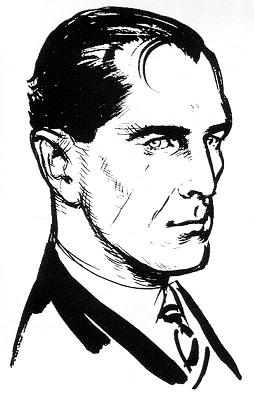
The James Bond series focuses on the titular character, a fictional British Secret Service agent created in 1953 by writer Ian Fleming, who featured him in twelve novels and two short-story collections. Since Fleming's death in 1964, eight other authors have written authorised Bond novels or novelisations: Kingsley Amis, Christopher Wood, John Gardner, Raymond Benson, Sebastian Faulks, Jeffery Deaver, William Boyd, and Anthony Horowitz. The latest novel is With a Mind to Kill by Anthony Horowitz, published in May 2022. Additionally Charlie Higson wrote a series on a young James Bond, and Kate Westbrook wrote three novels based on the diaries of a recurring series character, Moneypenny.

Dr. No is the sixth novel by the English author Ian Fleming to feature his British Secret Service agent James Bond. Fleming wrote the novel in early 1957 at his Goldeneye estate in Jamaica. It was first published in the United Kingdom by Jonathan Cape on 31 March 1958. The novel centres on Bond's investigation into the disappearance in Jamaica of two fellow MI6 operatives. He establishes that they had been investigating Doctor No, a Chinese operator of a guano mine on the fictional Caribbean island of Crab Key. Bond travels to the island and meets Honeychile Rider and later Doctor No.

Ian Lancaster Fleming was a British writer, best known for his postwar James Bond series of spy novels. Fleming came from a wealthy family connected to the merchant bank Robert Fleming & Co., and his father was the Member of Parliament (MP) for Henley from 1910 until his death on the Western Front in 1917. Educated at Eton, Sandhurst, and, briefly, the universities of Munich and Geneva, Fleming moved through several jobs before he started writing.
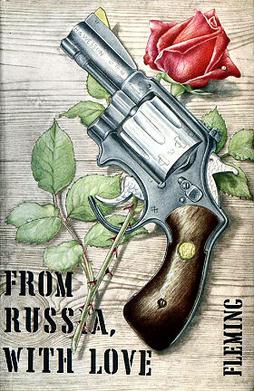
From Russia, with Love is the fifth novel by the English author Ian Fleming to feature his fictional British Secret Service agent James Bond. Fleming wrote the story in early 1956 at his Goldeneye estate in Jamaica; at the time he thought it might be his final Bond book. The novel was first published in the United Kingdom by Jonathan Cape on 8 April 1957.
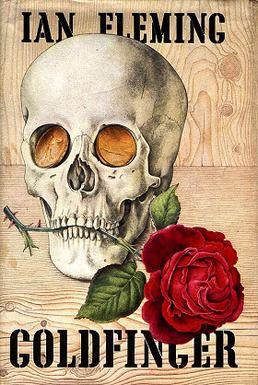
Goldfinger is the seventh novel in Ian Fleming's James Bond series. Written in January and February 1958, it was first published in the UK by Jonathan Cape on 23 March 1959. The story centres on the investigation by the British Secret Service operative James Bond into the gold-smuggling activities of Auric Goldfinger, who is also suspected by MI6 of being connected to SMERSH, the Soviet counter-intelligence organisation. As well as establishing the background to the smuggling operation, Bond uncovers a much larger plot: Goldfinger plans to steal the gold reserves of the United States from Fort Knox.

The Spy Who Loved Me is the ninth novel and tenth book in Ian Fleming's James Bond series, first published by Jonathan Cape on 16 April 1962. It is the shortest and most sexually explicit of Fleming's novels, as well as the only Bond novel told in the first person. Its narrator is a young Canadian woman, Viv Michel. Bond himself does not appear until two-thirds of the way through the book, arriving at precisely the right moment to save Viv from being raped and murdered by two criminals. Fleming wrote a prologue to the novel giving the character Viv credit as a co-author.

Raymond Benson is an American writer known for his James Bond novels published between 1997 and 2003.

Octopussy and The Living Daylights is the fourteenth and final James Bond book written by Ian Fleming in the Bond series. The book is a collection of short stories published posthumously in the United Kingdom by Jonathan Cape on 23 June 1966.
Ian Fleming Publications is the production company formerly known as both Glidrose Productions Limited and Glidrose Publications Limited, named after its founders John Gliddon and Norman Rose. In 1952, author Ian Fleming bought it after completing his first James Bond novel, Casino Royale; he assigned most of his rights in Casino Royale, and the works which followed it to Glidrose.
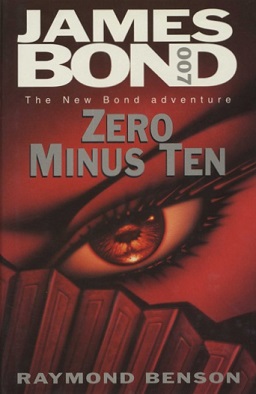
Zero Minus Ten, published in 1997, is the first novel by Raymond Benson featuring Ian Fleming's James Bond following John Gardner's departure in 1996. Published in the United Kingdom by Hodder & Stoughton and in America by Putnam, the book is set in Hong Kong, China, Jamaica, England and some parts of Western Australia.

Colonel Sun is a novel by Kingsley Amis published by Jonathan Cape on 28 March 1968 under the pseudonym "Robert Markham". Colonel Sun is the first James Bond continuation novel published after Ian Fleming's 1964 death. Before writing the novel, Amis wrote two other Bond related works, the literary study The James Bond Dossier and the humorous The Book of Bond. Colonel Sun centres on the fictional British Secret Service operative James Bond and his mission to track down the kidnappers of M, his superior at the Secret Service. During the mission he discovers a communist Chinese plot to cause an international incident. Bond, assisted by a Greek spy working for the Russians, finds M on a small Aegean island, rescues him and kills the two main plotters: Colonel Sun Liang-tan and a former Nazi commander, Von Richter.
In the 1950s and 1960s, Ian Fleming, creator of the fictional secret agent, James Bond, wrote a number of short stories featuring his creation that appeared in the collections For Your Eyes Only and Octopussy and The Living Daylights. Since 1997, several more short stories featuring Bond or set within the official James Bond universe have been published by authors who continued chronicling the world of Fleming's creation. The majority of these stories have, as of 2008, never been collected in book form, unlike the Fleming works. There are five exceptions: "Blast from the Past", "Midsummer Night's Doom" and "Live at Five" by Raymond Benson, "Your Deal, Mr. Bond" by Phillip and Robert King, and "Bond Strikes Camp" by Cyril Connolly which are discussed below.

The Facts of Death, first published in 1998, was the third novel by Raymond Benson featuring Ian Fleming's secret agent, James Bond. Carrying the Glidrose Publications copyright—the final James Bond novel to do so—it was first published in the United Kingdom by Hodder & Stoughton and in the United States by Putnam.

High Time to Kill, published in 1999, is the fourth novel by Raymond Benson featuring Ian Fleming's secret agent, James Bond. This is the first James Bond novel copyrighted by Ian Fleming Publications. It was published in the United Kingdom by Hodder & Stoughton and in the United States by Putnam. The novel's working title was A Better Way to Die.
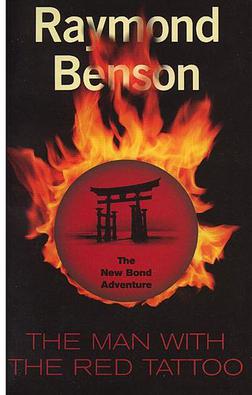
The Man with the Red Tattoo, first published in 2002, was the sixth and final original novel by Raymond Benson featuring Ian Fleming's character James Bond. Carrying the Ian Fleming Publications copyright, it was first published in the United Kingdom by Hodder & Stoughton and in the United States by Putnam. It was later published in Japan in 2003. The novel's working title was Red Widow Dawn.

Casino Royale is the first novel by the British author Ian Fleming. Published in 1953, it is the first James Bond book, and it paved the way for a further eleven novels and two short story collections by Fleming, followed by numerous continuation Bond novels by other authors.
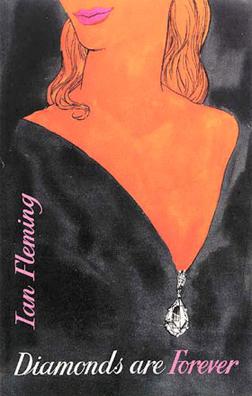
Diamonds Are Forever is the fourth novel by the British author Ian Fleming to feature his fictional British Secret Service agent James Bond. Fleming wrote the story at his Goldeneye estate in Jamaica, inspired by a Sunday Times article on diamond smuggling. The book was first published by Jonathan Cape in the United Kingdom on 26 March 1956.

Live and Let Die is the second novel in Ian Fleming's James Bond series of stories. Set in London, the United States and Jamaica, it was first published in the UK by Jonathan Cape on 5 April 1954. Fleming wrote the novel at his Goldeneye estate in Jamaica before his first book, Casino Royale, was published; much of the background came from Fleming's travel in the US and knowledge of Jamaica.

Commander James Bond is a character created by the British journalist and novelist Ian Fleming in 1953. He is the protagonist of the James Bond series of novels, films, comics and video games. Fleming wrote twelve Bond novels and two short story collections. His final two books—The Man with the Golden Gun (1965) and Octopussy and The Living Daylights (1966)—were published posthumously.
















